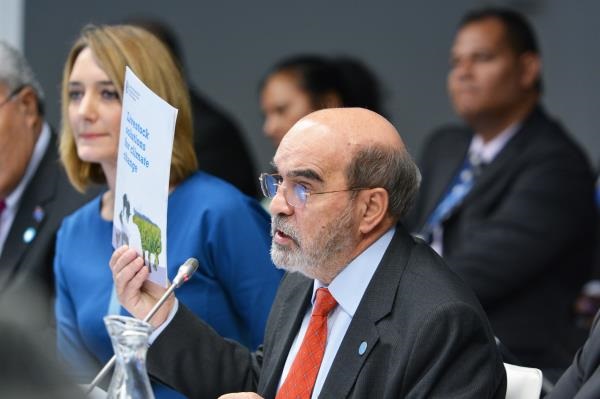
14 November 2017, Bonn/Rome - Emissions from the agriculture sectors are set to increase in the future, further contributing to climate change, unless the world adopts sustainable, climate-smart ways of producing, transporting, processing and consuming food, FAO Director-General José Graziano da Silva warned today at the United Nations Climate Change conference, COP 23.
"Climate change puts millions of people in a vicious cycle of food insecurity, malnutrition and poverty. Yet, we must confront the harsh reality: we are not doing enough to deal with this immense threat," Graziano da Silva said. He stressed that Least Developed Countries and Small Island Developing States are "particularly vulnerable" to climate change.
Noting that we should "not be discouraged by the challenges ahead," the FAO Director-General stressed that achieving Zero Hunger by 2030 is still possible. "Agriculture is where the fight against hunger and climate change come together to unlock solutions."
"It is not enough to only transform the way we produce food. Climate change mitigation and adaptation must be integrated into the entire food system: from production to transportation, from processing to food consumption, and in both rural and urban areas," Graziano da Silva said.
Climate change, hunger and poverty can and must be tackled together
FAO recently announced that the number of undernourished people has increased for the first time again in a decade with 815 million people going hungry every day.
This spike is due mainly to conflict and economic downturns, but also the impact of climate change, particularly prolonged droughts in Africa. And estimates by the Intergovernmental Panel on Climate Change show that climate change might increase the risk of hunger and malnutrition by up to 20 percent by 2050.
Graziano da Silva pointed to the fundamental role of food systems and agriculture which are heavily affected by climate change, but at the same time are also major drivers of climate change.
Adopting climate-smart agricultural practices
At least one fifth of total greenhouse gas emission can be attributed to the agriculture sectors, Graziano da Silva noted.
Much more needs to be done to reduce these emissions and to simultaneously improve yields and build resilience, the FAO Director-General said. This means adopting approaches such as agroecology and sustainable, climate-smart intensification, among others.
"We cannot expect that smallholders, family farmers and pastoralists ...can tackle these challenges on their own," and they will need national and international support, he added.
"Reducing deforestation; restoring degraded lands and forests; eliminating food loss and waste; enhancing soil carbon sequestration; low-carbon livestock - these are only a few known solutions to address hunger, poverty and sustainability at the same time," Graziano da Silva explained.
He noted in particular, that while livestock emits more greenhouse gas than other food sources, "low carbon livestock is possible," - for example, FAO estimates that readily available improved husbandry practices can reduce emissions by 20 to 30 percent.
FAO's work includes supporting countries in sustainably improving their agricultural sectors; in adapting and building resilience, and in mitigating global warming through agriculture. It also assists countries monitor their Nationally Determined Contributions in terms of climate change and delivers the technical and financial support needed to turn these commitments into reality.
At COP23, FAO launched a new report Tracking Adaptation in Agricultural Sectors that provides a framework and methodology to support to track climate change adaptation measures in the agricultural sectors.